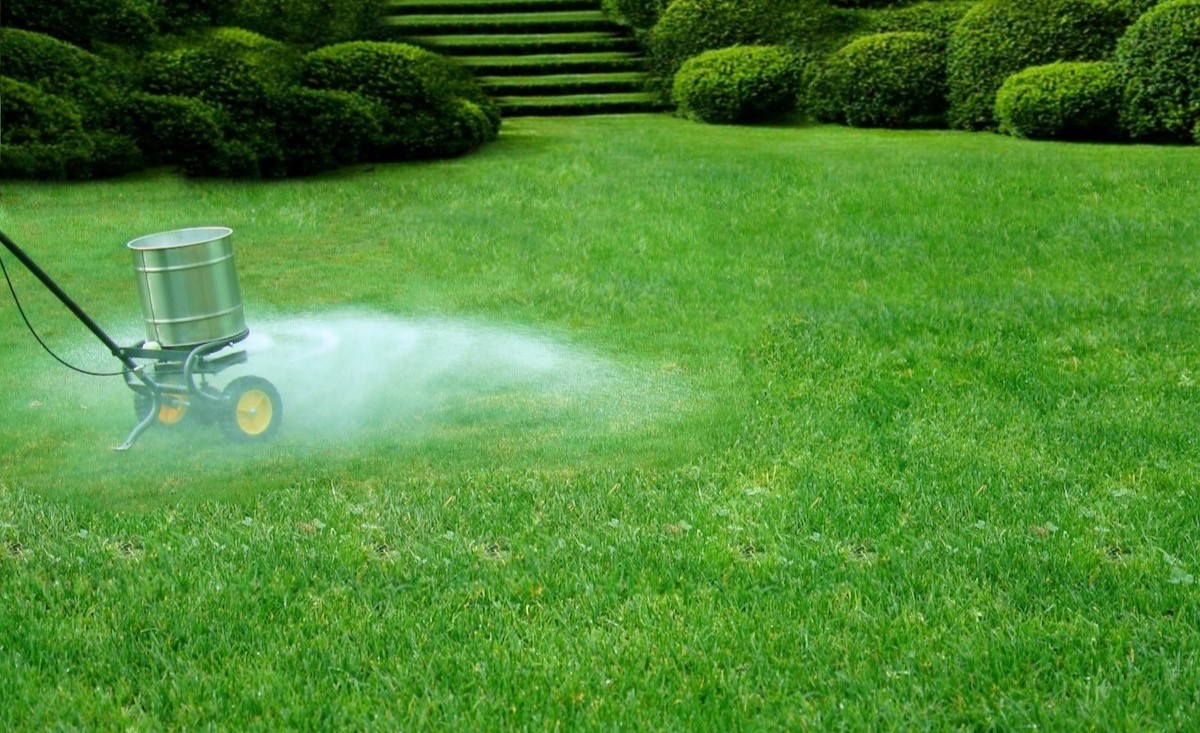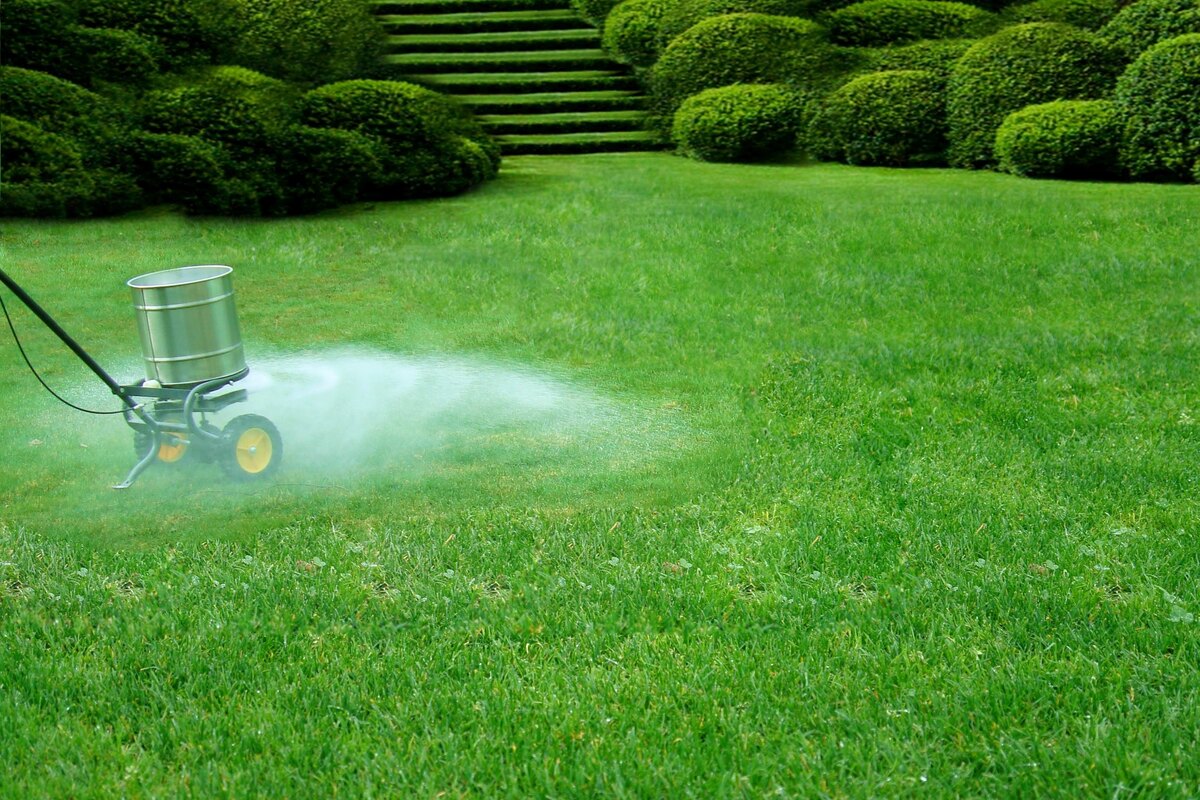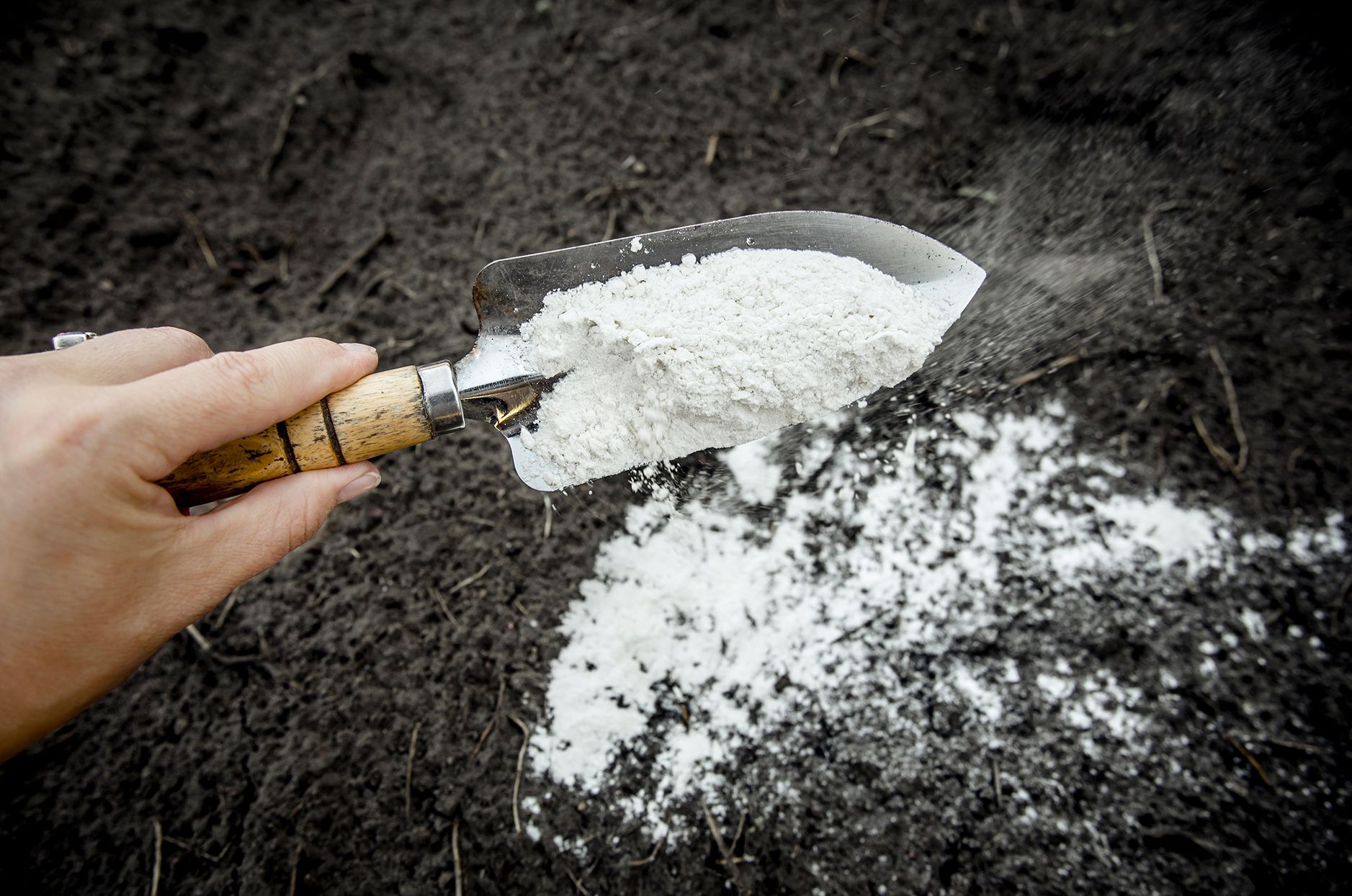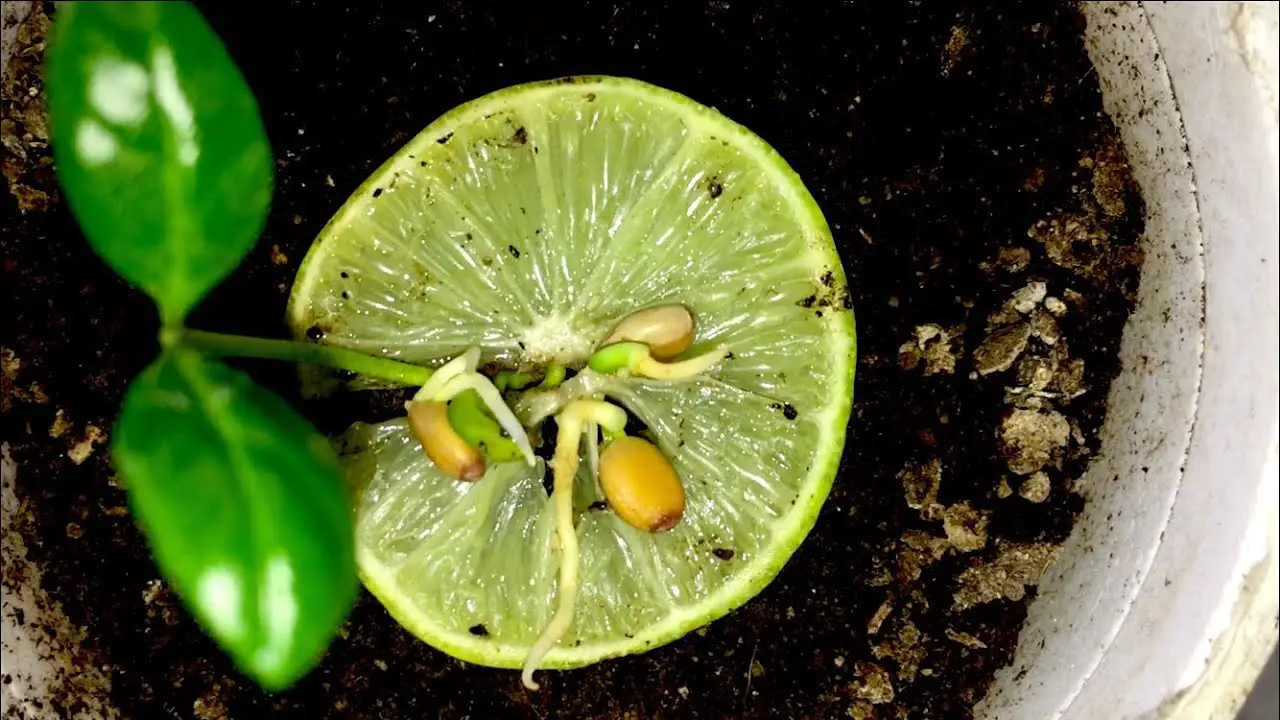Home>Gardening & Outdoor>Landscaping Ideas>What Is Lime For Lawns


Landscaping Ideas
What Is Lime For Lawns
Modified: January 9, 2024
Learn how lime can improve your lawn's health and appearance with our expert landscaping ideas. Find out the benefits of using lime for your lawn today!
(Many of the links in this article redirect to a specific reviewed product. Your purchase of these products through affiliate links helps to generate commission for Storables.com, at no extra cost. Learn more)
Introduction
So, you've been tending to your lawn, diligently mowing, watering, and nurturing it, yet it still seems lackluster. If this sounds familiar, you may be overlooking a crucial element in lawn care: lime. While often overshadowed by fertilizers and pesticides, lime plays a pivotal role in maintaining a healthy and vibrant lawn.
Lime is a versatile soil amendment that has been used for centuries to enhance soil quality and optimize plant growth. Its application is particularly beneficial for lawns, as it can rectify soil acidity, bolster nutrient absorption, and foster a thriving environment for grass to flourish.
In this article, we'll delve into the intricacies of lime and its significance in lawn maintenance. From understanding what lime is to unraveling the myriad benefits it offers, you'll gain valuable insights into why incorporating lime into your lawn care regimen can yield remarkable results. Additionally, we'll explore the practical aspects of applying lime to your lawn, empowering you to take proactive steps in nurturing your outdoor sanctuary.
Join us on this enlightening journey as we uncover the wonders of lime for lawns and equip you with the knowledge to elevate your lawn care practices to new heights.
Key Takeaways:
- Lime for lawns is like a superhero for your grass, fighting soil acidity and boosting nutrient absorption to help your lawn grow lush and resilient.
- Applying lime to your lawn is like giving it a refreshing drink of water, rejuvenating the soil and creating a thriving environment for vibrant, healthy grass to flourish.
Read also: 13 Best Lime For Lawns For 2024
What Is Lime?
Lime, in the realm of lawn care, typically refers to agricultural lime, which is a soil amendment composed of pulverized limestone or chalk. This natural substance is rich in calcium carbonate and magnesium carbonate, imparting alkaline properties that can counteract soil acidity. The two primary types of agricultural lime are calcitic lime, predominantly comprised of calcium carbonate, and dolomitic lime, which contains both calcium carbonate and magnesium carbonate.
When incorporated into the soil, lime serves as a pH buffer, neutralizing excessive acidity and restoring the soil to a more balanced pH level. This is pivotal because overly acidic soil can impede the uptake of essential nutrients by plants, including grass in lawns. By alleviating soil acidity, lime creates an optimal environment for grass to thrive, promoting robust growth and vibrant greenery.
Furthermore, lime enhances soil structure, fostering better aeration and water infiltration. This is conducive to root development and overall plant health, as it mitigates the risk of waterlogging and compaction, which can stifle root growth and impede nutrient absorption.
It’s important to note that the effectiveness of lime is contingent on various factors, such as soil type, current pH level, and the specific needs of the plants being cultivated. Conducting a soil test is instrumental in determining the appropriate type and quantity of lime for your lawn, ensuring that the application is tailored to address the unique characteristics of your soil.
By comprehending the essence of lime and its role in soil modification, you can harness its potential to fortify the foundation of your lawn, paving the way for a lush, verdant landscape that beckons admiration.
Why Use Lime for Lawns?
Integrating lime into your lawn care regimen can be a game-changer, bestowing an array of benefits that contribute to the overall health and vibrancy of your lawn. One of the primary reasons to use lime for lawns is its capacity to rectify soil acidity. Over time, soil can become increasingly acidic due to factors such as acid rain, leaching of essential nutrients, and the decomposition of organic matter. This acidification impedes the availability of crucial nutrients, such as nitrogen, phosphorus, and potassium, hindering the optimal growth of grass and other plants.
By applying lime, you can effectively raise the pH level of acidic soil, creating a more hospitable environment for grass to thrive. This, in turn, facilitates enhanced nutrient uptake, fostering lush, resilient turf that is better equipped to withstand environmental stressors and pest infestations.
Moreover, lime promotes the efficient utilization of fertilizers. In acidic soil, fertilizers may not be fully utilized by plants, leading to wastage and inefficiency. The introduction of lime mitigates this issue by optimizing the availability and uptake of nutrients, ensuring that the investment in fertilizers translates into tangible improvements in the health and appearance of your lawn.
Another compelling reason to use lime for lawns is its role in enhancing soil structure. Acidic soil tends to be compacted and less permeable, impeding the circulation of air, water, and nutrients within the soil. This can hinder root growth and overall plant vitality. Lime ameliorates soil structure, promoting better drainage, aeration, and root development, thereby fortifying the foundation for a luxuriant, resilient lawn.
Furthermore, lime contributes to the suppression of certain lawn diseases. Acidic soil can foster the proliferation of detrimental microorganisms, whereas a balanced pH level, facilitated by lime, creates an environment less conducive to disease development. This proactive measure can help safeguard your lawn from afflictions and minimize the need for remedial treatments.
By harnessing the benefits of lime for lawns, you can lay the groundwork for a verdant, thriving landscape that exudes vitality and allure, elevating the allure of your outdoor space and enriching your enjoyment of your lawn.
Applying lime to lawns can help to balance the soil’s pH levels, making it more suitable for healthy grass growth. It also helps to improve nutrient uptake and reduce the presence of moss.
Benefits of Using Lime for Lawns
The utilization of lime for lawns yields a multitude of benefits that reverberate throughout the ecosystem of your outdoor haven. One of the foremost advantages is the restoration of soil pH balance. Lime acts as a pH buffer, counteracting the effects of soil acidity and elevating the pH level to a range conducive to optimal plant growth. This fundamental adjustment paves the way for enhanced nutrient availability, fostering robust, luxuriant grass that forms the cornerstone of a captivating lawn.
Moreover, the application of lime bolsters the efficacy of fertilizers, maximizing their impact on the health and appearance of your lawn. In balanced, non-acidic soil, fertilizers can be more readily absorbed and utilized by plants, fueling vigorous growth and vibrant coloration. This synergy between lime and fertilizers empowers you to leverage your investments in lawn care products, yielding tangible improvements in the lushness and resilience of your turf.
Another compelling benefit of using lime for lawns is its role in mitigating the detrimental effects of acidic soil on microbial activity. Acidic environments can impede the proliferation of beneficial microorganisms that contribute to soil health and nutrient cycling. By neutralizing soil acidity, lime fosters a hospitable milieu for these essential microorganisms, promoting the regeneration and enrichment of the soil ecosystem.
Lime also plays a pivotal role in optimizing the availability of essential nutrients, such as nitrogen, phosphorus, and potassium, which are indispensable for the flourishing of grass and other plants in your lawn. By fostering a balanced pH environment, lime facilitates the efficient uptake of these nutrients, fortifying the foundation for resilient, verdant turf that captivates with its vibrancy and vitality.
Furthermore, the ameliorative effects of lime on soil structure contribute to improved water infiltration, root development, and overall plant vigor. By enhancing soil aeration and permeability, lime creates an environment conducive to robust root growth and nutrient absorption, fortifying the resilience of your lawn against environmental stressors and promoting enduring beauty.
Embracing the benefits of using lime for lawns empowers you to cultivate a landscape of enduring allure and vitality, where the verdant expanse of your lawn becomes a testament to the harmonious synergy between nature and nurturing care.
How to Apply Lime to Your Lawn
When it comes to applying lime to your lawn, a strategic and systematic approach ensures optimal results, fostering a robust, vibrant turf that beckons admiration. The first step in this endeavor is to conduct a soil test to ascertain the current pH level and determine the appropriate quantity of lime needed. Soil testing kits are readily available at garden centers and can provide invaluable insights into the specific needs of your lawn.
Once the soil test results are obtained, the next consideration is the type of lime to use. Calcitic lime is ideal for addressing soil acidity while also providing a source of calcium, whereas dolomitic lime is recommended for soils that are deficient in magnesium. Selecting the appropriate type of lime ensures that your lawn receives targeted, tailored treatment to optimize its health and vitality.
Before applying lime, it is advisable to mow the lawn to a moderate height and ensure that the soil is moist, as this facilitates the penetration and distribution of the lime. The most effective time to apply lime is during the early spring or fall, when the soil is more receptive to amendments and the weather conditions are conducive to the assimilation of lime into the soil.
When distributing lime, employing a calibrated spreader is recommended to achieve even coverage and prevent over-application in concentrated areas. This ensures that the lime is dispersed uniformly, promoting consistent adjustments to the soil pH across the entirety of the lawn. Following the application, lightly watering the lawn aids in the incorporation of the lime into the soil, enhancing its efficacy.
It’s important to note that patience is key when applying lime to your lawn, as the effects may not be immediately apparent. The gradual assimilation of lime into the soil catalyzes a transformative process that unfolds over time, culminating in a revitalized, resilient lawn that emanates vitality and allure.
By adhering to these guidelines and approaching the application of lime with diligence and precision, you can bestow your lawn with the gift of rejuvenation, nurturing it into a flourishing tapestry of greenery that evokes admiration and appreciation.
Read more: Lawn Care: When To Use Lime
Conclusion
As we draw the curtains on this exploration of lime for lawns, it becomes evident that lime is not merely a soil amendment, but a catalyst for transformation, breathing new life into lackluster lawns and nurturing them into vibrant, resilient landscapes. The profound impact of lime lies in its ability to rectify soil acidity, optimize nutrient availability, and fortify the foundation for luxuriant, thriving turf.
By embracing the use of lime for lawns, you embark on a journey of stewardship, where the care and nurturing of your lawn transcend routine maintenance and evolve into a harmonious collaboration with nature. The benefits of lime resonate throughout the ecosystem of your lawn, fostering a balanced, fertile soil that sustains lush, resilient grass and beckons admiration with its enduring allure.
As you tread this path of conscientious lawn care, remember that the application of lime is not merely a task, but a testament to your commitment to cultivating a landscape that embodies vitality, beauty, and resilience. Embrace the transformative potential of lime, and witness as your lawn blossoms into a testament to the harmonious synergy between nature’s splendor and nurturing care.
So, let us embark on this journey with reverence for the wonders of lime, as we nurture our lawns into flourishing oases of greenery that captivate the senses and elevate the splendor of our outdoor sanctuaries.
Frequently Asked Questions about What Is Lime For Lawns
Was this page helpful?
At Storables.com, we guarantee accurate and reliable information. Our content, validated by Expert Board Contributors, is crafted following stringent Editorial Policies. We're committed to providing you with well-researched, expert-backed insights for all your informational needs.















0 thoughts on “What Is Lime For Lawns”